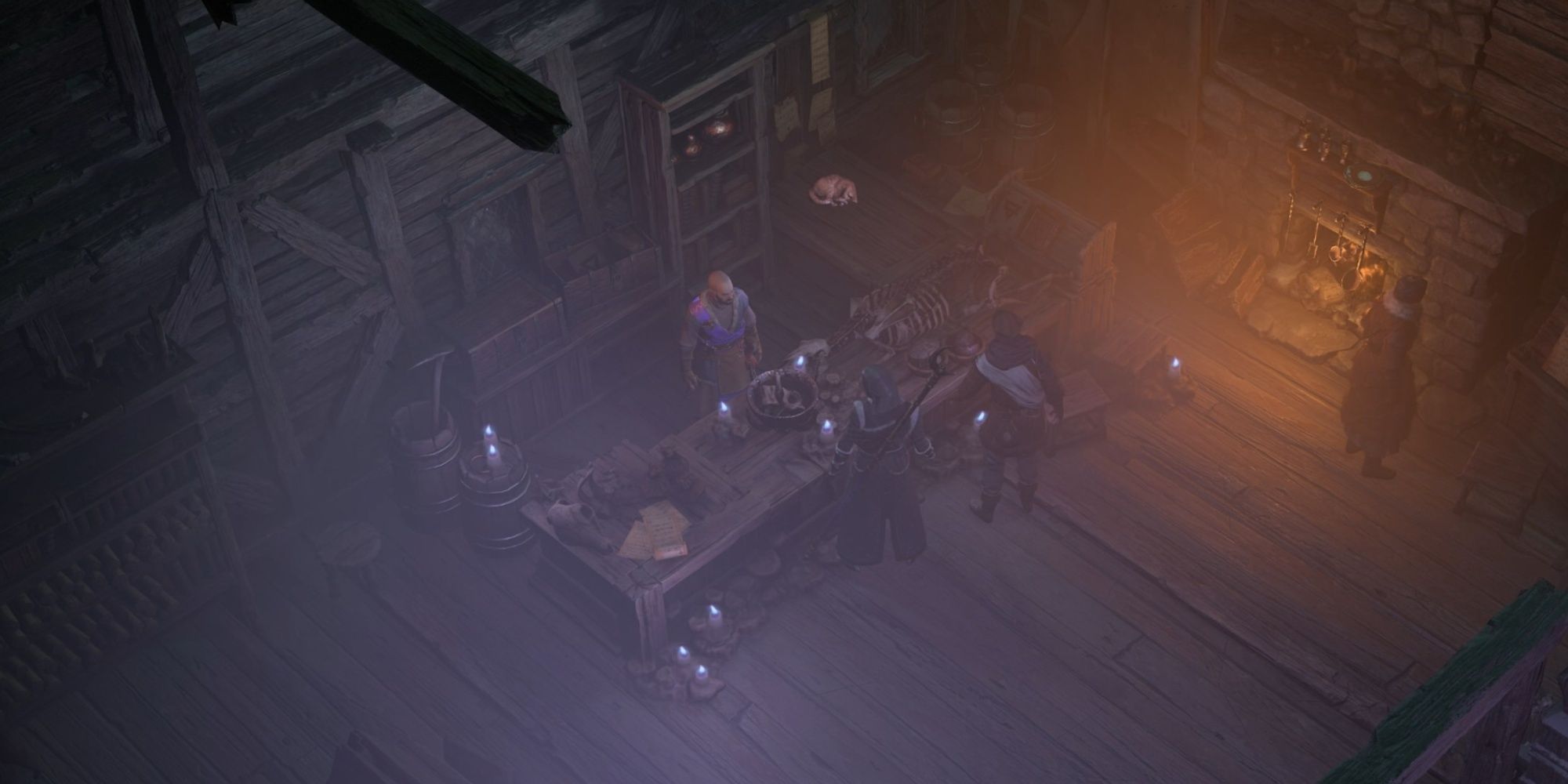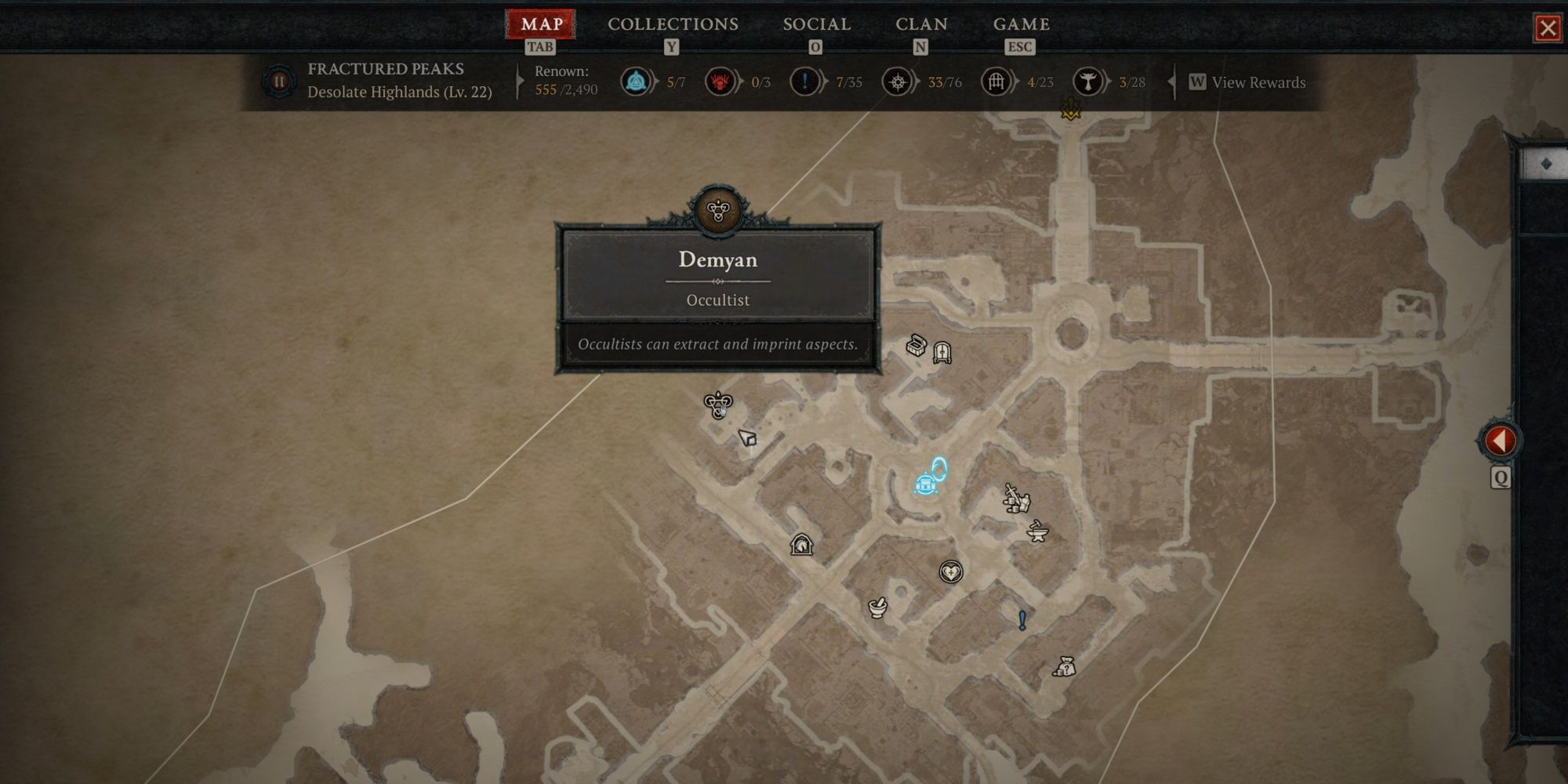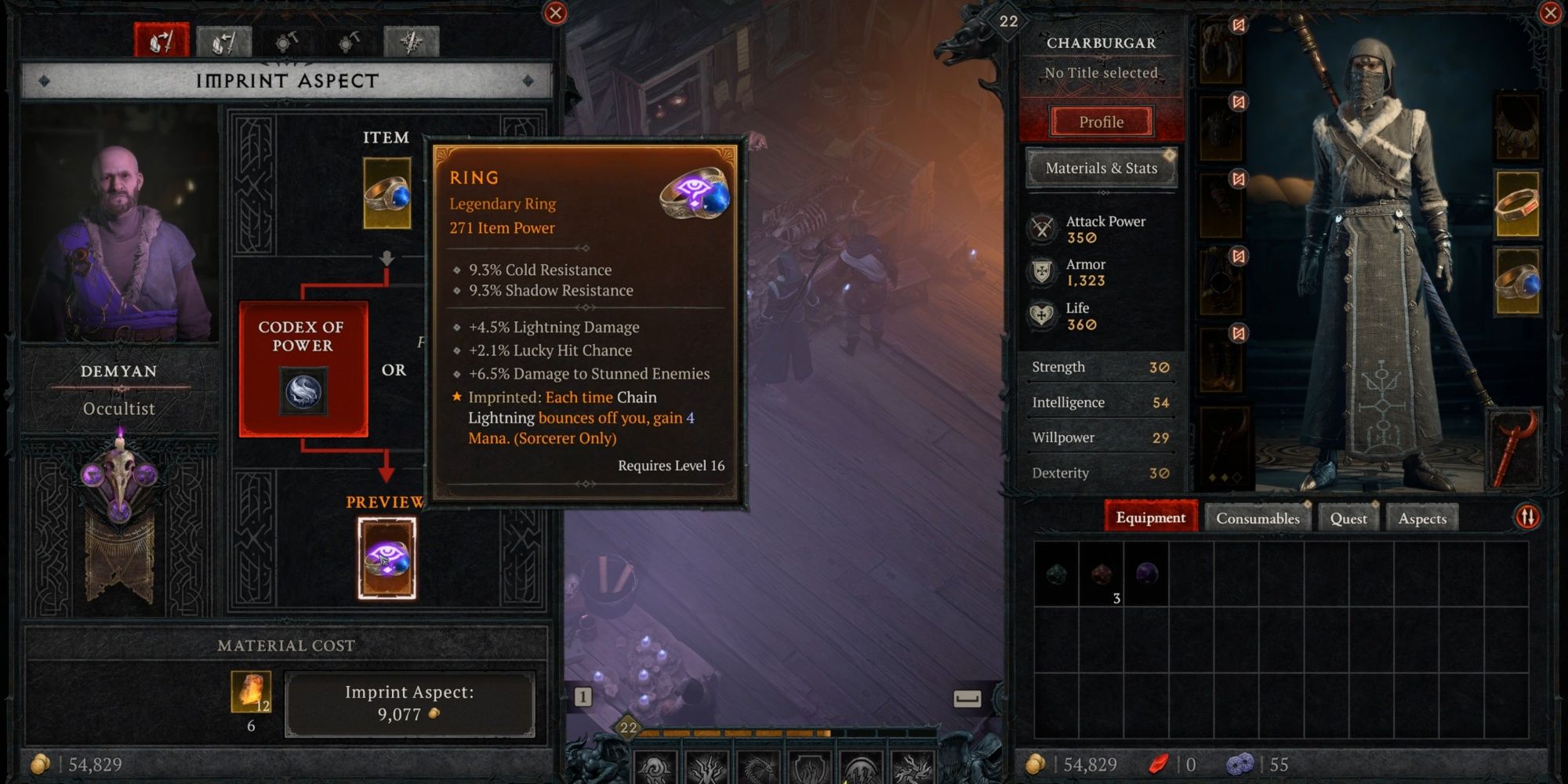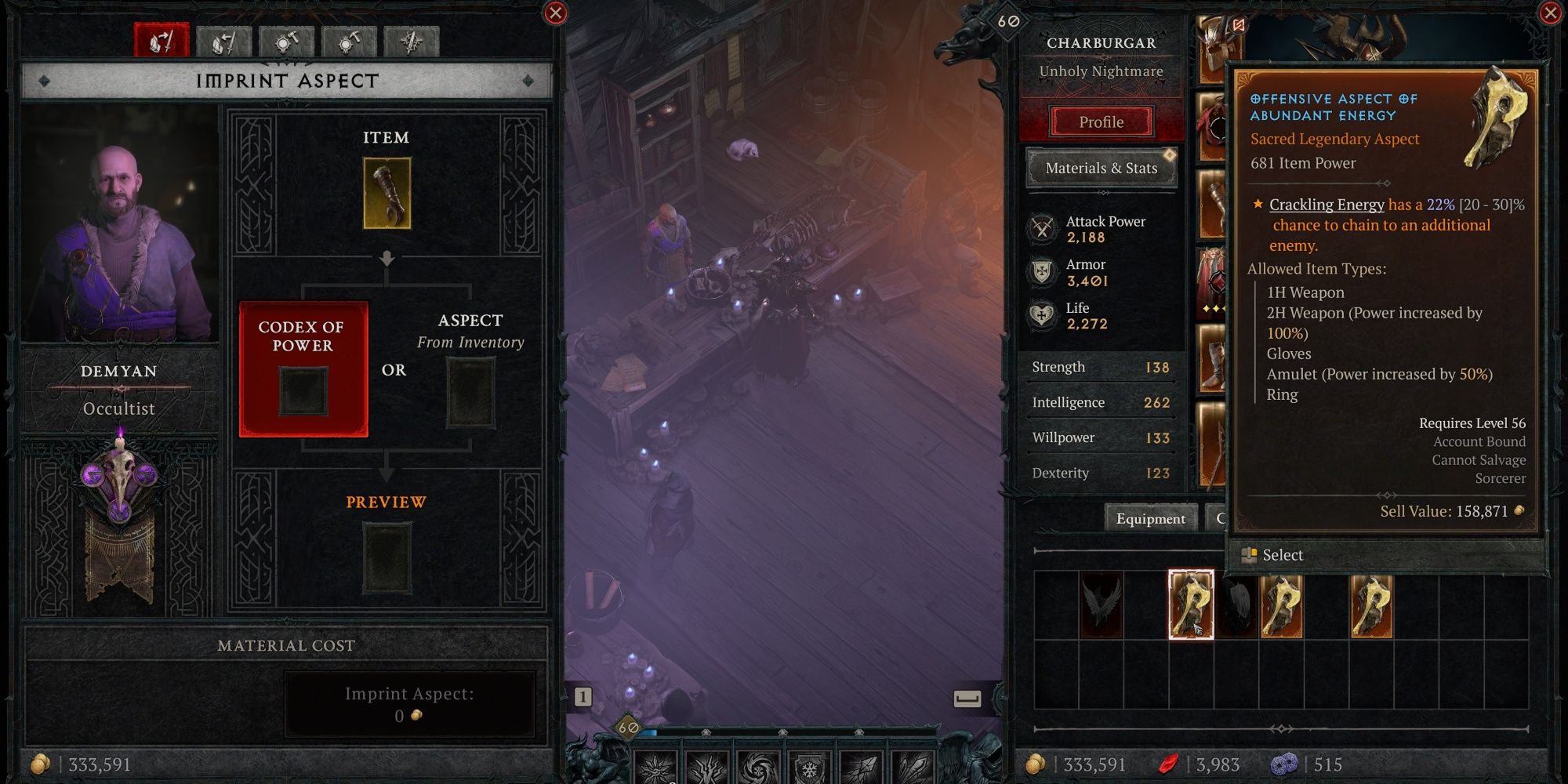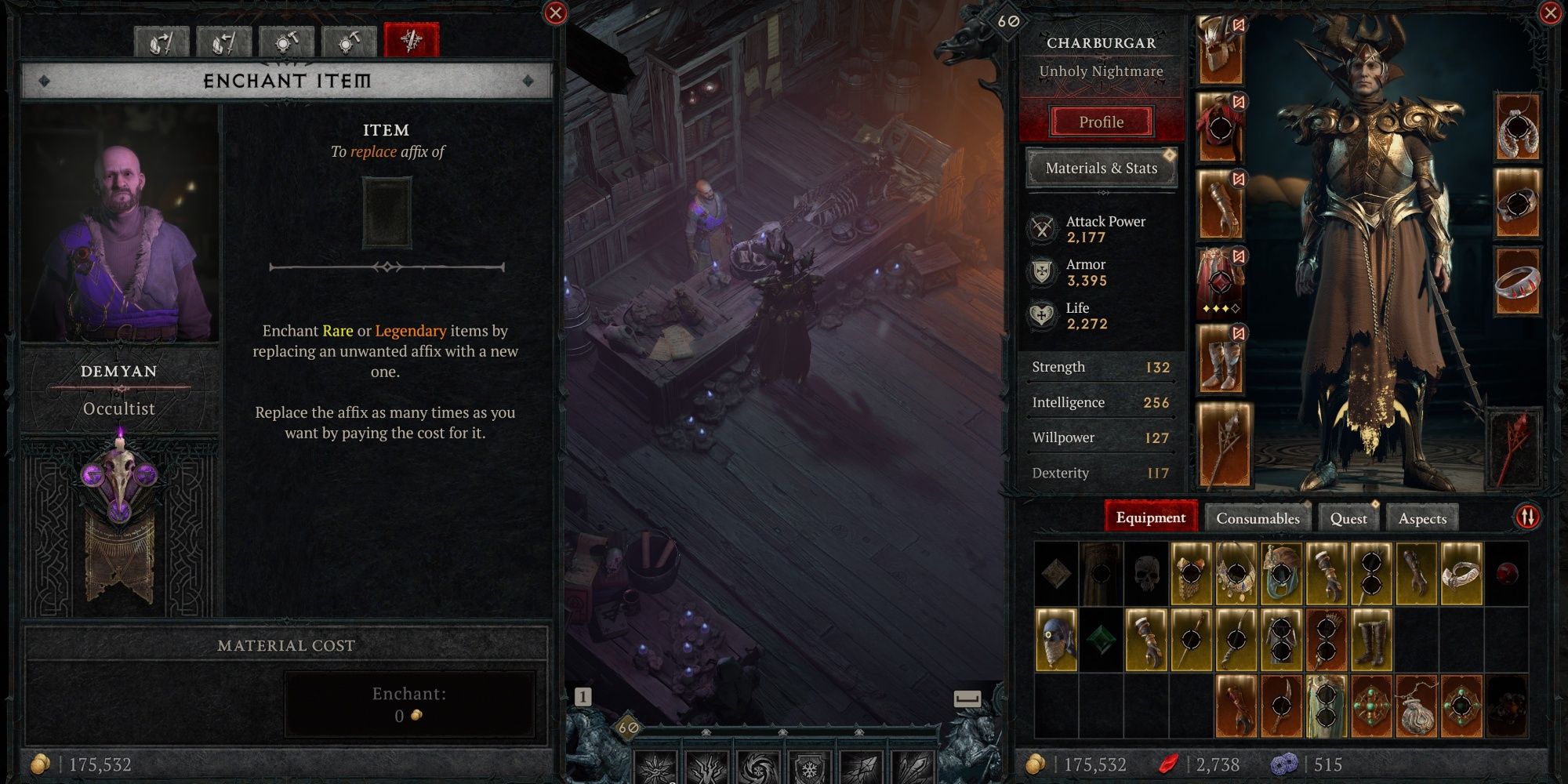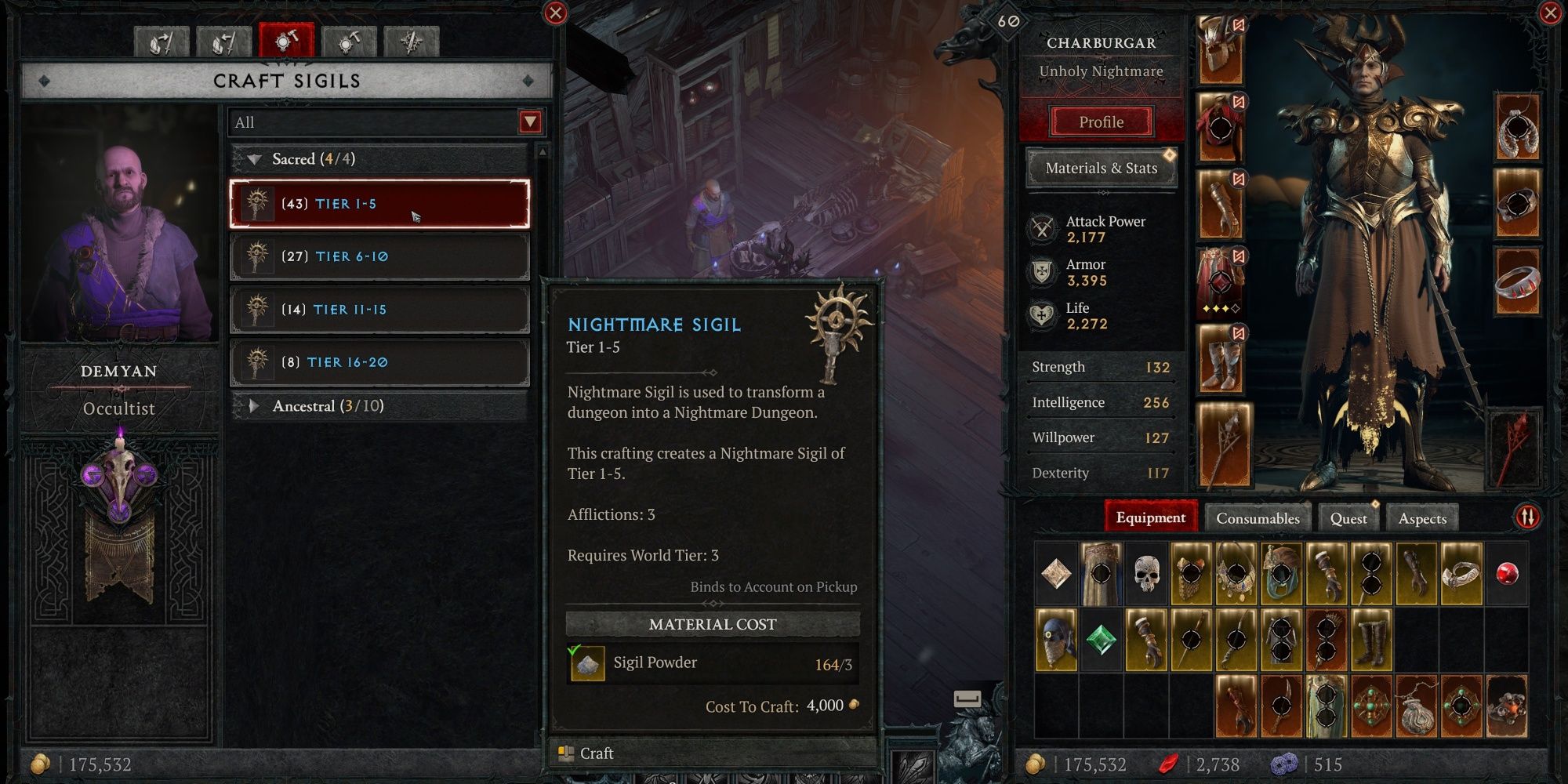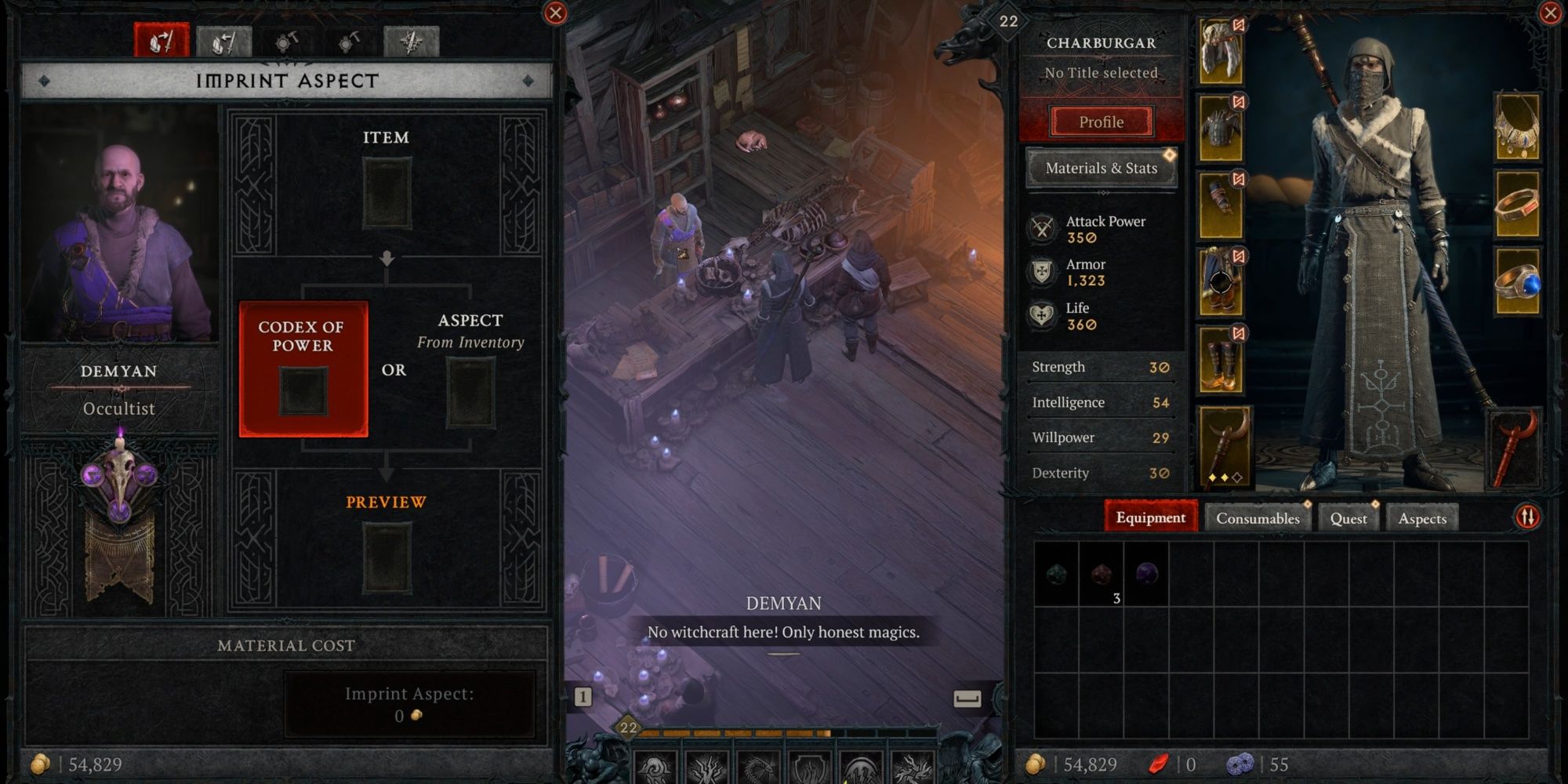Legendary items are the core of each Diablo 4 to build. These items have powerful legendary attachments that provide build-able effects, from massive damage increases to increased skill functionality. Equipping a character with a full set of legendary gear will make your leveling experience much less painful.
This is why the occultist is so important. This vendor is able to forge legendary attachments to your items while enchanting any attachments you don’t like. Newer players will want to use the occultist to craft better gear, while veterans will appreciate the occultist’s enchanting and sigil crafting services. This guide will cover how to unlock an occultist vendor, how to use each of their services, and give some helpful tips on how to best use an occultist.
What is an occultist?
An occultist is a vendor who specializes in magic. The Occultist can upgrade items with legendary attachments, change item attachments with enchantment, and forge Nightmare Sigils for players at the end of the game. Of all the Diablo 4 vendors, the occultist is arguably the most important to improving your build. Using an occultist is important in the early game to improve your build and unlock basic synergies. In the endgame, Occultist is invaluable for re-spinning near-perfect items and forging legendary attachments on the perfect rares you find.
Unlocking the Occultist
Players unlock the Occultist by completing the Occultist Vendor quest available at level 25 or by unlocking the Codex of Power. The latter happens when you complete any dungeon in Sanctuary that grants an accessory that your character can use. Once you unlock Occult Services, you can find them in the northern part of Kyovoshad, marked with a triangle icon on the map. Most major Act hubs include an occultist, not just Kyovashad.
An additional quest called “Sigil Crafting” will be unlocked after completing some of the Nightmare Dungeons in Diablo 4’s endgame. Completing this quest will unlock the ability to display and craft nightmare sigils from any occultist in the sanctuary.
Print pages
Forging a legendary perk on an item will bind it to your account, preventing you from swapping the item with other players.
Aspect imprinting is the primary service offered by the occultist, allowing you to forge a legendary addition to an item for a small fee. You will only need to have the mount before you can stamp it on another object. There are two ways to get the legendary add-on:
- Code of Power: This is a collection of learned legendary attachments. Complete your collection by completing dungeons in Sanctuary. Each dungeon has a unique addition.
- Legendary Aspects: This is a remnant of a destroyed legendary item that grants a legendary buff with certain stats. Displaying legendary items at the Occultist will grant Aspects.
Keep in mind that Codex of Power is subject to rolls compared to legendary drops, so you’ll want to break down legendary items into legendary aspects whenever you can. Aspects you have can be found in your inventory under the “Aspects” tab. You can hold up to 22 aspects at once.
With the legendary accessory ready, it’s time to craft the item. Choose your item and the legendary accessory you want to imprint. An annotation imprint will cost gold and materials to craft. This will be required at lower levels Veiled crystals, obtained by exhibiting objects of rare quality at Kovač. Items above level 50 will be required Evil Fragments instead, a resource gained from exhibiting legendary items at the Blacksmith.
A legendary item crafted this way will show an “embossed” mark next to the legendary accessory. That means that there will be no dismantling of this Legendary assign an aspect. If you end up replacing this item with another upgrade, it’s best to dismantle the Legendary at the Blacksmith to unlock his transmog skin. For this you will also receive materials of rare quality, no Legendary materials since the item was made.
Imprint of the sacred and ancestors
Sacred and Ancestral Legendary items you display will grant Sacred and Ancestral Aspects. There doesn’t seem to be a significant difference between these and standard aspects, and you can use holy aspects on standard rares and vice versa (shown above).
Charming side dishes
If you enchant an item, it will be bound to the account, preventing you from swapping the item with other players.
Enchanted items return from Diablo 3, allowing you to change an individual accessory on an item of your choice. This will cost a moderate gold fee and requires some materials to craft. Rare items require Veiled crystals enchant while legendary items require Fiend Roses in addition to cloaked crystals or evil shards. Fiend Roses can be found in Helltide areas unlocked on World Tier 3: Nightmare difficulty and above. Unique items cannot be enchanted.
The charming interface will allow you to select a specific accessory on the item you want to re-spin. You will get three options:
- New option #1
- New option no. 2
- Keep the current attachment
Choose the option that best benefits your character and embrace sorcery. You can continue this attachment as many times as you like, though charming becomes exponentially more expensive. We only recommend re-enchanting an item multiple times if you are in the endgame and have a near perfect item in your hands.
Making a sigil
Unlocked on World Tier 3: Nightmare difficulty, Sigil Crafting allows an occultist to forge sigils of a certain tier. You will unlock this feature after completing some Nightmare Dungeons. If you talk to an occultist, you will be able to forge sigils in a specific bracket of levels, separated by five levels per bracket. For example, your first crafting option creates a sigil between T1-5, your second option creates a T6-10 sigil, and so on. All other Sigil properties are randomincluding the selected darkroom and attachment modifiers.
Making a sigil this way will require Sigil in dust, a currency earned by completing Nightmare Dungeons and dismantling unwanted sigils. Dismantling of sigils can be done by an occultist through a separate tab. The higher the Sigil level, the more Sigil Powder you will earn when you dismantle it. Conversely, higher level sigils require more sigil dust to craft.
Legendary crafting tips
- Drop Legendary Items at the Occultist: This will keep the legendary item attachment roll as an aspect for future use.
- Dropping legendary gear in the Blacksmith will instead grant crafting materials and transmog skins.
- Enchant rare items before turning them into legendary ones. This allows you to re-spin attachments without needing Fiend Roses.
- Legendary accessories forged on amulets are 50% stronger. Attachments forged on two-handed weapons are 100% stronger.
- In the Codex of Power menu, you can track any attachment you own by selecting it. This will mark the location of the dungeon on your map.

